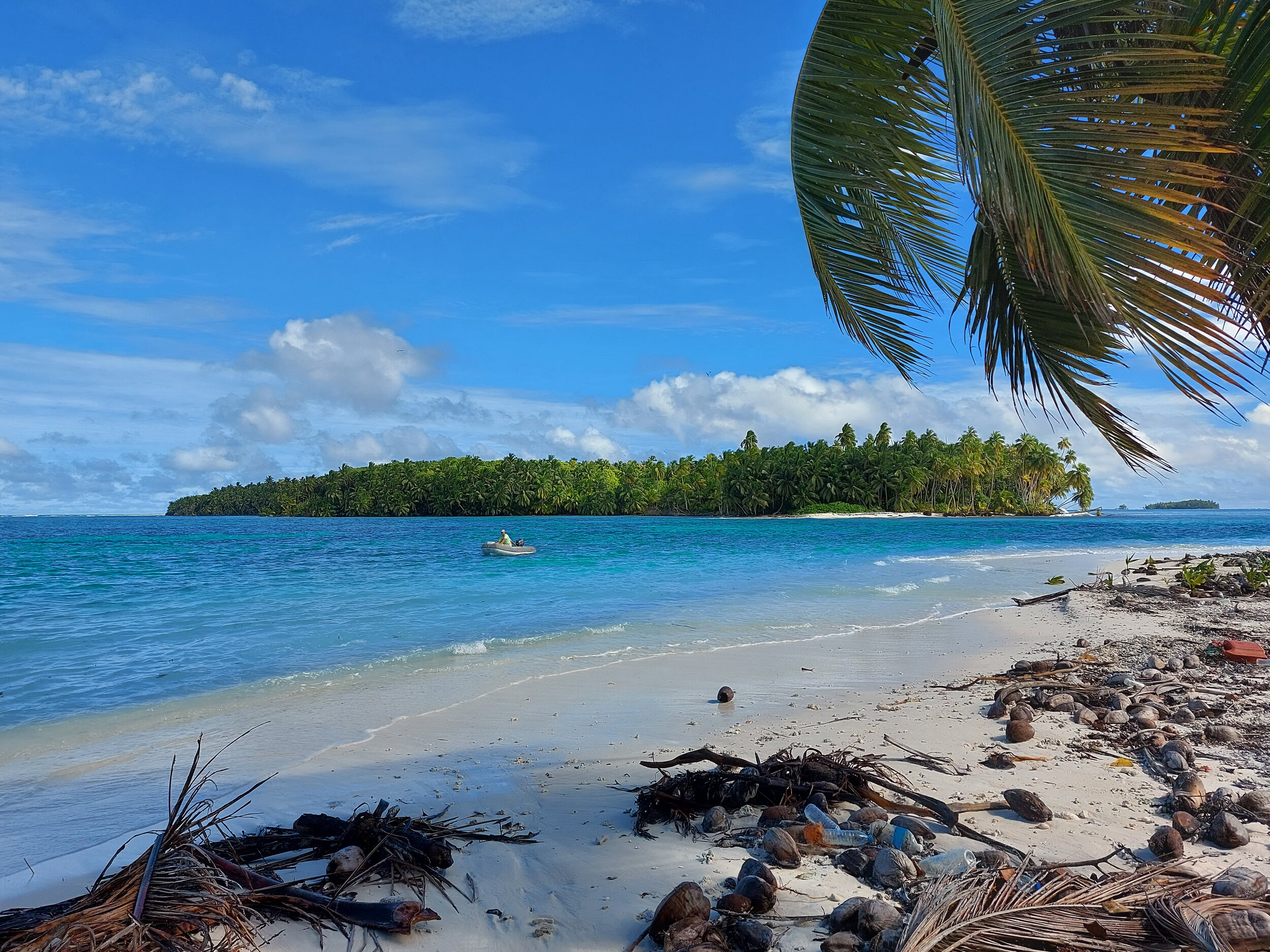The Chagos Diaries: #4 - A Jungle of Emotions

Sunday July, 19 2020
We visited Boddam Island yesterday, 3 miles from where we’re anchored, and it was a very surreal experience.
Chagos has an interesting history, and the ramifications from the forcible removal of the Chagossian people by the British Government in the late 60’s and early 70’s to make way for the new US/British Military Base at Diego Garcia continue to be felt to this day.
(If you’re interested in finding out more about it, I’ve included a bunch of information about the fate of the local people and the establishment of the Marine Protection Area at the bottom of this blog).
In the meantime, one interesting relic from the time that Chagos was inhabited is the ruined settlement on the island of Boddam.
This small town included many dwellings, stores, a church and a cemetery, all solidly built over a 100 year period from stone, and now lying in ruins since the people were forced to leave in 1970.
Since that time, the jungle has reclaimed the township, and the only inhabitants are the giant Coconut Crabs for which Chagos is famous.
There was a period 20-30 years ago when cruisers could come and go from Chagos as they pleased, and many stayed here for months on end. The cruisers set up a semi permanent encampment on shore at Boddam, converting one of the ruined buildings into a “Yacht Club” – the name was more of a joke than anything, but cruisers would meet there every day, build a fire in front of the building, and sit in deck chairs spinning yarns and watching the sun set.
When they left at the end of the season, they’d often leave behind deckchairs, picnic tables and other assorted items for those following in their wake to use.
At one point in the late 90’s, a yacht sank in the lagoon, and it’s occupants (a young couple and their cat) became permanent residents for a period of 4 years while they re-floated and repaired the yacht, with the help of cruisers coming over the years and bringing them the necessary spare parts.
Evidence of all of this activity can be seen on Boddam, and not in a good way. This was a different era of cruising, when the concept of “leaving a clean wake” was not so well established. There are broken beer bottles scattered among the ruins, and there’s all sorts of assorted sailing debris (buoys, floats, jerry cans, a damaged rudder, even a mast seemingly (although I couldn’t find that item in particular).
Eventually, the authorities cracked down, and the permit system and heavy restrictions that are in place today were a direct result of the damage being done by the cruisers.
As I walked around among the ruins, barely visible through the thick jungle that has grown in and around them, it was hard to know what to feel more sad about.
Seeing the once mighty stone buildings and pier crumbling to ruins among the relentless reclamation of the jungle.
The fate of the Chagossian people, forcibly evicted and unable to return despite UN resolutions demanding that the UK allow them to.
Or the terrible abuse of the “white privilege” enjoyed by the yachties who were allowed to come here when the Chagossians were not, and showed so little appreciation of the beautiful and pristine environment that they spoiled it for everyone in the future.
Further information about Chagos
This documentary, made by British journalist John Pilger in 2004, highlights the plight of the Chagossian people and their ongoing struggle to return home.
The people of Chagos were evicted in the 1960s to make way for the US airforce base in Diego Garcia. This is their story.
In 2010, the entire BIOT area was designated as an MPA (Marine Preservation Area), essentially making it the largest marine reserve in the world, and it’s clear that whatever the outcome of the ongoing dilemma for the Chagossian people, a lot of good things are happening in the area. The Bertarelli Foundation have partnered with the British Government to try and focus on marine conservation in the area and here’s an interesting video showing the more positive side of the situation.
This video outlines the positive side of the current situation - the amazing work being done in the world’s largest marine park.













